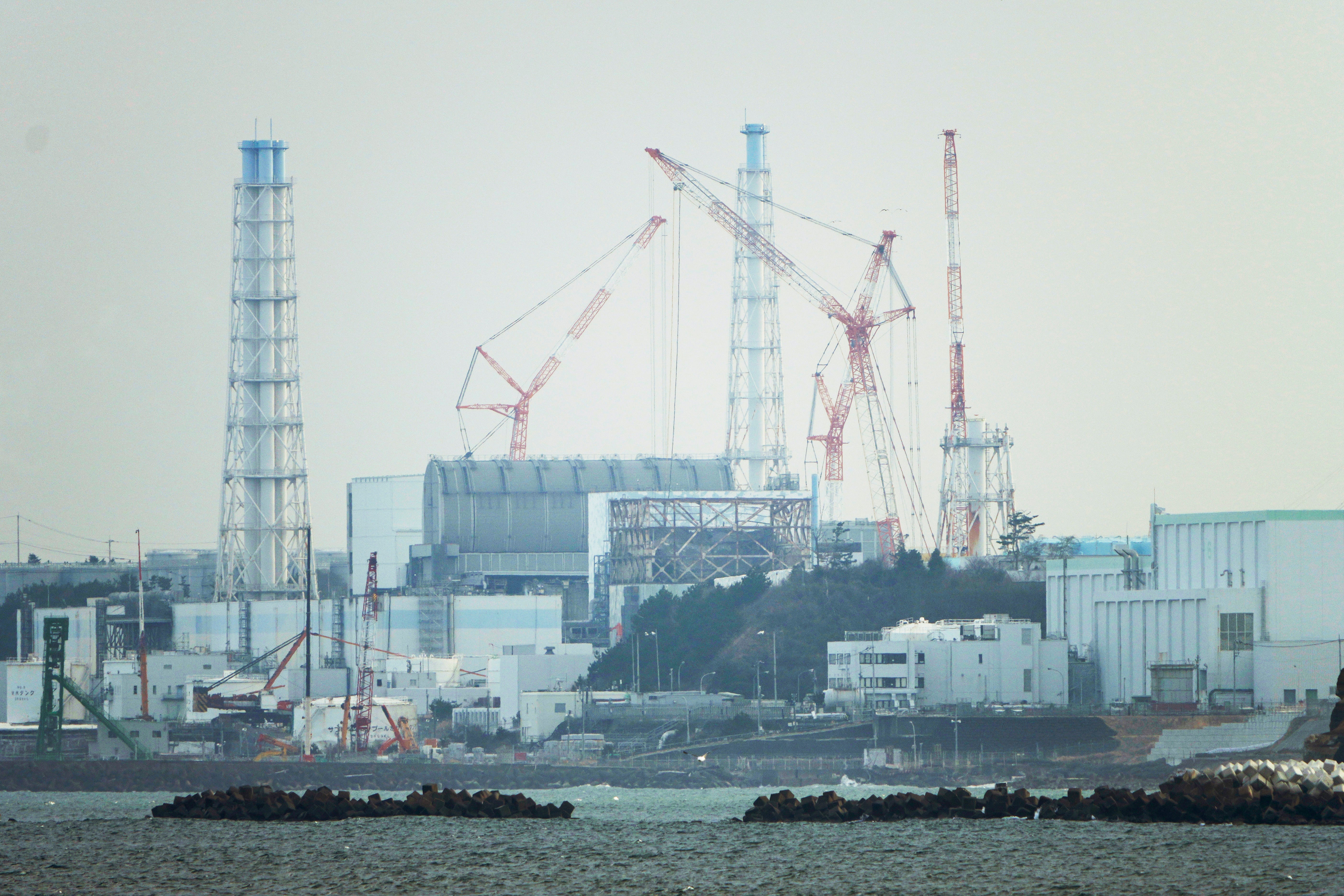IAEA says Fukushima water release to follow safety standards
The head of a U.N. nuclear agency task force assessing the safety of Japan’s plan to release treated water from the wreaked Fukushima nuclear plant into the sea says Japanese regulators have shown their commitment to comply with international safety standards

Your support helps us to tell the story
From reproductive rights to climate change to Big Tech, The Independent is on the ground when the story is developing. Whether it's investigating the financials of Elon Musk's pro-Trump PAC or producing our latest documentary, 'The A Word', which shines a light on the American women fighting for reproductive rights, we know how important it is to parse out the facts from the messaging.
At such a critical moment in US history, we need reporters on the ground. Your donation allows us to keep sending journalists to speak to both sides of the story.
The Independent is trusted by Americans across the entire political spectrum. And unlike many other quality news outlets, we choose not to lock Americans out of our reporting and analysis with paywalls. We believe quality journalism should be available to everyone, paid for by those who can afford it.
Your support makes all the difference.The head of a U.N. nuclear agency task force assessing the safety of Japan's plan to release treated radioactive water from the wreaked Fukushima nuclear plant into the sea said Friday that Japanese regulators have shown their commitment to comply with international safety standards.
International concern over the plan has been widening. Last week, the head of the 18-nation Pacific Island Forum, which includes Australia, New Zealand and other island nations, expressed concern about any impact of radiation from the water on the livelihoods of people in the region which suffered in the past from atomic bomb tests, and urged Japan to suspend the plan.
“The region is steadfast in its position that there should be no discharge until all parties verify through scientific means that such a discharge is safe,” forum Secretary General Henry Puna said at a public seminar on the Fukushima issue.
The U.S. National Association of Marine Laboratories, an organization of more than 100 laboratories, also expressed opposition to the plan, saying there was a lack of adequate and accurate scientific data supporting Japan’s assertion of safety.
Gustavo Caruso, the head of the International Atomic Energy Agency task force, said his team visited the damaged Fukushima Daiichi plant this week and witnessed the first of a series of inspections by the Japanese Nuclear Regulation Authority before it gives its final go-ahead for the release. He said officials from the authority addressed all questions raised by the task force and showed their commitment to following safety standards.
Japan's government said last week that the release is likely to begin sometime in the spring or summer and continue for decades.
Japanese regulators are responsible for examining whether preparations for the release by the plant operator, Tokyo Electric Power Company Holdings, are consistent with its approved implementation plan.
At the request of Japan, IAEA is reviewing whether the reparations for the discharge comply with international standards.
A massive earthquake and tsunami in 2011 destroyed the Fukushima Daiichi plant’s cooling systems, causing three reactors to melt and release large amounts of radiation. Water used to cool the three damaged reactor cores, which remain highly radioactive, has leaked into the basements of the reactor buildings and has been collected, treated and stored in about 1,000 tanks that now cover much of the plant.
The government and TEPCO say the tanks must be removed so that facilities can be built for the plant's decommissioning. The tanks are expected to reach their capacity of 1.37 million tons later this year.
Most of the radioactivity is removed from the water during treatment, but tritium cannot be removed and low levels of some other radionuclides also remain. The government and TEPCO say the environmental and health impacts will be negligible because the water will be released gradually after further treatment and dilution by large amounts of seawater.
Some scientists say the impact of long-term, low-dose exposure to tritium and other radionuclides on the environment and humans is still unknown and the release should be delayed. They say tritium affects humans more when it is consumed in fish.
Local fishing communities have fiercely rejected the plan, saying their already badly hurt business will suffer again due to the negative image from the water release. Neighboring countries including China and South Korea have also raised concerns about potential health risks.
Caruso, who heads the IAEA’s Department of Nuclear Safety and Security, said the task force will release a report on this week’s mission within three months and make another visit to Japan in the second quarter of the year to meet with Japan’s industry ministry, the safety authority and TEPCO “to finalize any outstanding questions” before compiling a comprehensive report.